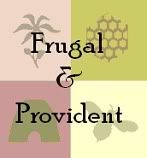In order for your food to last the 30+ years that many items can they must be stored properly, and this entails the packaging and where/how you store them.
Packaging
Containers-
- #10 Cans
- Foil Pouches
- PETE Bottles (for dry products)
- Plastic Buckets (under certain conditions.
You use these containers with an oxygen absorber pack to fight off bacteria and help preserve the nutrition of the food. However, it must be noted that sealing moist foods in with an oxygen absorber can cause botulism poisoning.
Storage Conditions
- Temperature- Food should be at about 75°F/24°C. Lower temperatures (not freezing) are ok, but higher temperatures may shorten the shelf life of the food.
- Moisture- Keep the area dry. If possible, keep the food off the ground to allow air circulation.
- Light- Keep foods stored in PETE bottles and cooking oils (basically any container that light can penetrate) out of light.
- Insects/Rodents- Keep foods stored in pouches and PETE bottles where they won't be infiltrated by rodents. Sealed cans are generally safe from these types of problems.
You can pretty much rule out a few places with the storage conditions listed above. Here's a list of places people store foods and why you should not store them there (and this is in general not just when stored in food storage containers).
- Garage- Bugs/rodents, moisture, temperature, light, your garage probably sees all four! Even if you think you don't have any of these problems out there or have stored food out there and "they tasted just fine," there are things you can't see/taste that can affect your food. The nutrients may be diminished. Containers can leach chemicals into the food when stored in hot/humid areas. Garages are susceptible to moisture from humidity as well as from cars, floods, water heaters, utility sinks, etc not to mention we store a lot of harsh chemicals in the garage.
- Attics- This is pretty much the same as above. Unless of course you have a finished attic, which then by all means store your food there! Just be aware of light.
- Basements- (again unless you have a finished basement) The main problems with basements are moisture and insects/rodents.
- Near the Stove/Oven- a lot of people make the mistake of storing food in cabinets near the stove, but the stove/oven give off a lot of heat!
- Under the Sink- Just don't do it. You never know when a pipe will leak, and even so it is often moist under a sink.
- Near the Bathroom- most people don't do this, but you might be tempted because you run out of space in your pantry. You would be really tempted if you have a linen closet in your bathroom or maybe is in your bathroom (a lot of people's master closets are near the bathroom opening). Really the moisture, heat, and bugs make this a bad idea.
So where should you store it? Be creative. Pantries are obvious. Backs of clothes closets (or even devoting half of an underused closet in say the guest room), under beds, hall closets, coat closets, above kitchen cabinets, under side tables (cover the table with a cloth), under sofas, or make furniture out of them. If you really set your mind to it, you will find unused space that you can hide it in.
Next week we will talk a little more about the different storage containers and how to utilize them.





